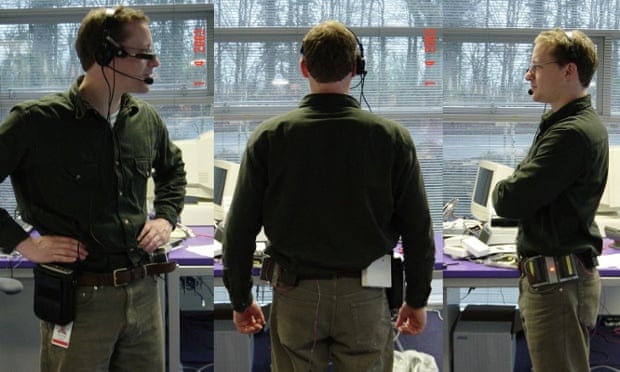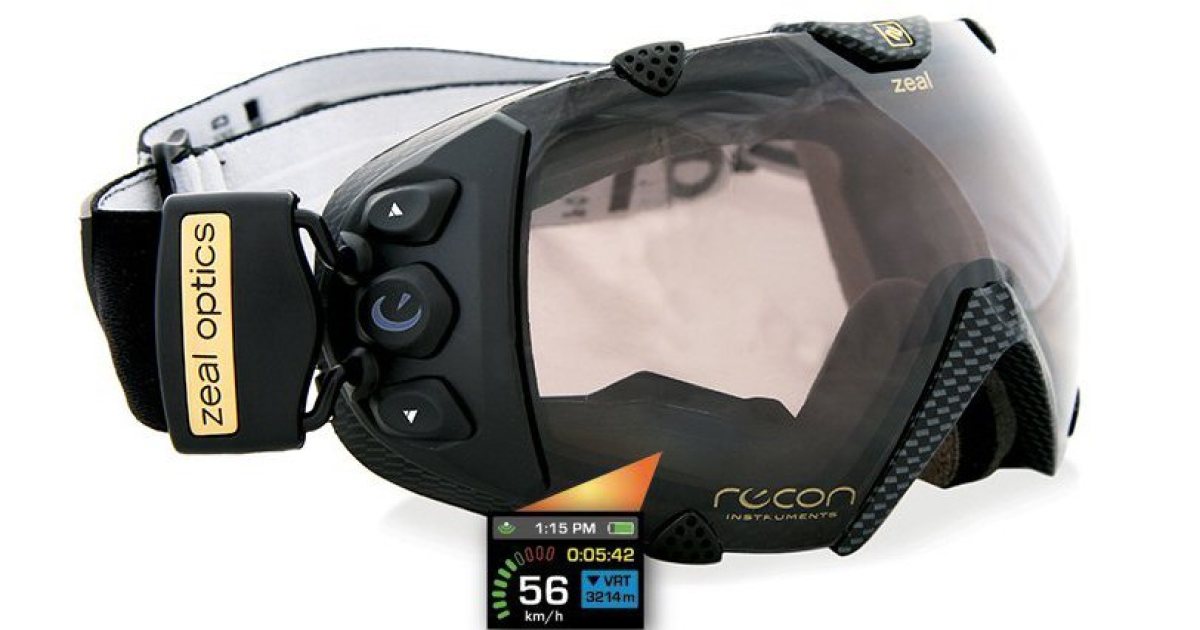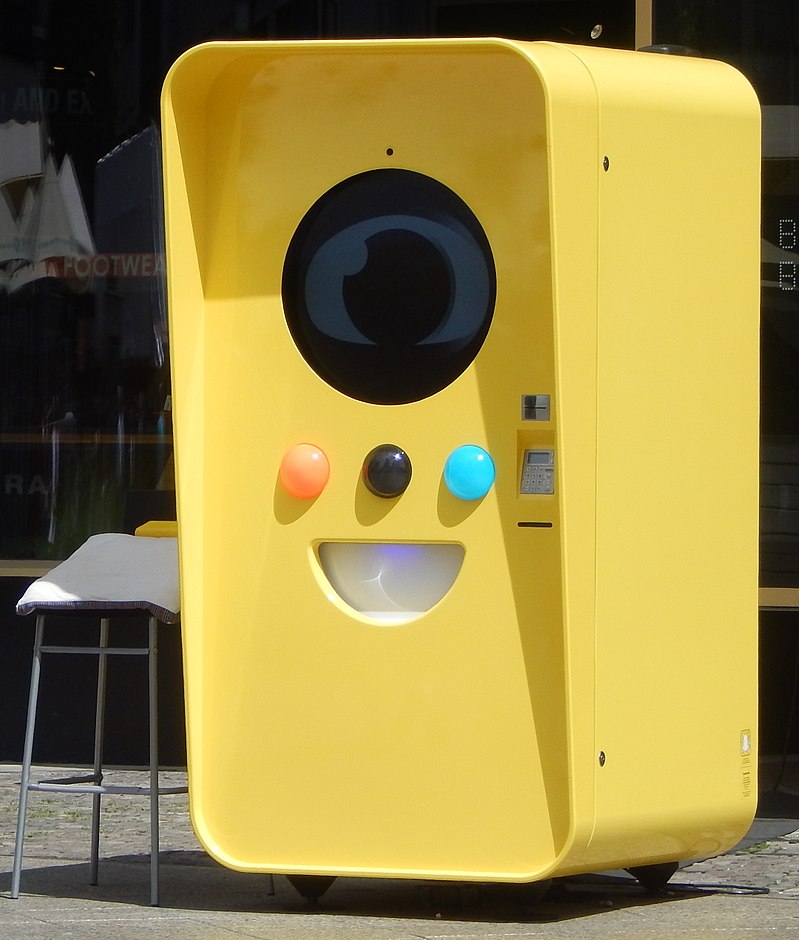After a few MV Journals, I’m finding out that I fall very quickly for stories about technologies with a few decades of history. The fun part is learning that they are even older than I’ve had thought and the impact that they already had in the current iterations. This edition will explore two brand new devices, still in early access, that might shape how we will interact with things that keep getting more “smart” and intrusive in our lives while relieving burdens or just helping an ordinary mortal to interact with the Metaverse.
The Robots are returning!
September 28
Amazon Astro’s promotional video popped up on my social stream without much fanfare, making me very curious about the gadget. Devices like this usually get more attention from the media, but after digging a bit, I’ve found that I’ve missed Amazon’s Devices event where Astro was announced. The event propped up many exciting goodies, including new versions for existing devices and a stronger integration bond between services and devices for the household. Take a peek at the list but put your credit card far from reach. Christmas is right around the corner, and you should expect some fresh gimmicks to hit the market, begging for those pandemic saved moneys. Even with the chip shortage stalling many carmakers, there’s still some space for refreshing low-end tech and appease hungry consumers. Yes, I’m priming you for disappointment, but there are buts, of course.
Robota
Not a fun word for sure. “Robota” stands for “forced labour” in Slavic. A word for feudal times, repurposed by Mr Karel Čapek and Mr Josef Čapek to depict an artificial human worker without a soul. Even today, the term fits perfectly. Robots might be fun, but we are still creating many to do things that we don’t or can’t do, so I guess that slave automata will eventually become widespread before global warming hits the fan.
Exploring Robots, in general, is a worthy book topic that goes well beyond this piece, but I would like to trace back a few of the gimmicks that we’ve seen in the last half a century while presenting a few that are very successful within a household.
House Tamed Robots
I had to search for the name of the first one that I can remember from my childhood. We saw its exhibitions in TV shows, some quite disturbing, like when a Portuguese TV series from the 90s made it a character for an episode, but I think most of my memories are Disney cartoon books’ advertising. Tomy’s Omnibot 2000 is a blast from the past. A remote-controlled robot that could carry a drink, play cassettes (notice the link on this ancient word since there’s a big chance of being an arcane term if you’re born in this millennia ), wake you up with its alarm clock and do a few other extra tricks. The Omnibot 2000 was the product of the Japanese tech boom and probably the most advanced one in the Tommy Robot series, which included simpler and more affordable toys. The Omnibot got into the market in 1983 and made a decade of success at least. Before this magic millennium of same-day shipping, novelties took a while to get into Europe, so it wasn’t unusual to see such a device hit Christmas shelves in the 90s only after it became boring in the United States of America.
Although the Omnibot was a state of the art gadget at the time, it was still a robot gimmick and an expensive one, setting you back by 600 dollars. Adjusting the value for inflation using Smart Asset Inflation calculator places the Omnibot in the 1,600 dollars vicinity.
After Omnibot’s success, more came and failed to deliver anything helpful in the coming decades, but from time to time, one or another would make the news bouts and sell some units while the novelty halo lasted. Within the roster of mildly successful bots, we can find Aibo from Sony, first launched in 1999, the bot mimicking a dog is still on sale nowadays with a 3K price tag. More recently, we also had Sphero and its reincarnation in the Star Wars universe as BB-8. With few features, it is still a fun bot to play for a while, but the Sphero series has many options for kids exploring their way into Science, Technology, Engineering and Mathematics fields or just STEM as the set is summarized nowadays. Sphero’s store sells many parts that will allow our bright kids to build fun and entertaining toys while learning essential skills for the future.
Herobots
Look around and check how many truly useful robots are doing anything around you. Not many, sure, since most do their work in the background, and you’ll probably never know most of them, but a few became household heroes, saving the tired middle-class time and money. From a not so extensive list, I’ve selected two that became valuable magical helpers.
Roomba
I’ll start with iRobot’s Roomba since I own one and can definitely see the device’s benefit. Roomba’s debut in 2002 was well received by the public, especially with a price tag of 199.95 dollars which is well within reach of a large consumer base. The not so smart bot was smart enough to vacuum large surfaces and deal with the usual obstacles at home. Unfortunately, the bot doesn’t handle stairs, and it uses a system of virtual walls, a beacon that emits signals to ward off Roomba from prohibited or dangerous areas. But even this Roomba Achilles heel doesn’t diminish much the value that the bot delivers. Even the older versions that don’t map house surroundings or have a remote-controlled mobile App are enough to keep your grounds tidy. Just program the sweeping days and hours, connect its base station in any socket and leave it be. Nowadays, iRobot’s roster goes beyond the simple task of vacuuming floors and provides solutions for pools, broad glass surfaces and floor washing bots. It’s not hard to imagine many bots such as the Roomba scurrying around households and keeping your living environment well disinfected.
Thermomix
You might not call it a robot, but the thing doesn’t have to wander around your house to be one. Kitchen robots usually stay put in your food preparation areas, excluding some mixing accidents that happen here and there and might make them move a bit more than they should, but in normal circumstances, one expects good service for confection menial tasks. Thermomix, or Bimby in some countries, has a huge fan base. The product door-to-door sales vector is unusual today, but relying on travelling salesmen was widespread back in the day. Nowadays, you can buy one online in some countries, but the sales process still uses word of mouth with practical demonstrations from certified sales representatives. Although I cannot vouch for Thermomix’s remarkable features, I failed to meet a single owner that doesn’t praise the robot for saving meal preparation times and helping find affordable healthy options with simple ingredients. Recent versions even connect to the internet to access a plethora of official and community recipes, from baby food to deserts. But this robot isn’t at the reach of any pocket. With a price tag a bit below 1300 euros for the Bimby model, it is a hard sell to the cash strapped middle class. Looking around online, you might find some old used models. If you ask the current owner why they are selling, the most common response is, “I want to buy the new version.”
Amazon Astro
And finally, the Amazon Astro. We didn’t even scratch the surface of the Robot “eco” system, and I’m not sure I would be up to the task, but the brief overview of the last decades of bots shows that few are actually helpful and productive. Amazon touts Astro as a companion Robot with home surveillance features. While I believe in the “surveillance” part since it’s equipped with Alexa and a trial for Amazon Ring Pro service, it is still hard to see it as a companion bot, but the official spec states that it can help the elderly with some simple alerts. The promotional video shows the sleek bot waking up after being alerted to noise and catching a racoon with its paws deep in the cake jar. The use case is far fetched for sure, but the idea of having some device watching your home with an integrated alarm is definitely appealing for many, myself included. Cameras with motion detection can even be found at your local supermarket, but I don’t know a single one that can roam around the house and peek into hard places. Add some remote control capabilities, and you’ll have your personal home spy bot.
Service Required
What makes me a bit weary is the Ring Pro features that I can’t understand why the device requires a service subscription to have local autonomous behaviours. Take, for instance, patrols and event-triggered investigations. Why does a Robot need a service connection to execute tasks that don’t require external computation or storage? Add Alexa Guard, an Amazon service that uses Echo or Echo Show for a home security helpline. Combining Guard with Astro and Ring allows for hands-free emergency helpline calls. Again, why do I need a subscription for executing a simple call when you’re already paying for Guard Plus? I hope we can escape this service hell that companies are building around devices and features that don’t require upgrades to keep doing what they already do right out of the factory. Checking the list of features that require a service subscription for such a device made me recall Netflix’s Love Death and Robots short animation, “Automated Customer Service”. No. Please no.
Day 1
A quick visit to Amazon’s Astro page will show the label “Day 1 Edition”. If you don’t know what it means, it is easy to explain. Although the device is production-ready, it is still in a preview phase where Amazon discounts the price and only sells to approved buyers. You’ll have to fill in an invite request before having the privilege of being relieved of 999.99 dollars. Astro has many limitations, and Amazon acknowledges them. They’ll probably avoid clients with tricky environments where the bot will not work correctly. Do you have a glossy black floor or transitions with reliefs above 3.5 cms? You’ll have to wait for the next version if it comes.
The future
An increased price tag for starters. The discounted price of 999.99 dollars will climb up to 1,449.99 if everything goes well with this version. There is also potential for more features, of course, and from my point of view, some modularity would help to get a more extensive consumer base. Adding a vacuum module or replacing the fixed pole camera with a [Ring Always Home] optional camera would make the device much more appealing. And if one of the proposals is that Astro works as a company bot, why not add a “Hey Disney” virtual assistant to keep kids entertained while your Bimby works out the dinner? I’m sure that I will want a few years from now, but I’ll wait for the intrepid early adopters to smooth out the kinks with such a steep price tag. Oh, and by the way, Amazon’s Astro has the following warning on their page:
*We want you to know Astro cannot go up or down stairs.*
…and it doesn’t vacuum anything. Unimpressive.
Mirrorshades
September 13
On September 9th, Thursday morning, Mr Mark Zuckerberg announced Ray-Ban Stories.

Right at the beginning of the video, Mr Mark states something that resonates with every science fiction connoisseur:
“…and you don’t have to choose between interacting with a device or interacting with the world around you.”
Between the 60s and 70s, a new genre emerged from the literary masterpieces penned by Mr Philip K. Dick, Harlan Ellison, Ms Ursula K. Le Guin, and so many others that I feel ashamed for not providing the complete Hero list. A few years before these Heros came to be, Ray-Ban wayfares’ were launched, a must-have accessory for the counterculture rebel of the 60s until more famous faces made the accessory mainstream, providing a cool look when you went out to take the trash. Finally, they became too widespread even for James Dean copycats.
1984, Mr Bruce Sterling, another science fiction Hero, aggregates a set of short stories as a way of consolidating a new literary genre, born some years earlier and deeply rooted in the New Wave science fiction movement. Depending on whom you read, it was a pivotal work for the movement or a nail in the imagination coffin that should not depart from the box he created.

Looks familiar, right?
That set of wayfarers’ look-alikes were a mark of the rebel counterculture that Cyberpunks were. In Mr Bruce Sterling own words from Mirrorshades’ preface:
” by hiding the eyes, mirrorshades prevent the forces of normalcy from realizing that one is crazed and possibly dangerous.”
But they were also a technological symbol that evolved during the Second World War. Material Engineering advances allowed brands to put the first mirrored ones on shelves in the 40s, and Ray-ban started selling their own models in the 70s. Mirrorshades’ Cyberpunk stories would feature augmented humans, and a common theme would be vision as a digital interface masked by a sleek pair of Mirrorshades, sometimes surgically fused with flesh. Sometimes they would enhance eyesight, sometimes they overlay information from a remote system; other times, they just decorated reality with metadata. At the extreme, they transport the user to a different reality, out of “meat space” and into something that we might call the Metaverse.
Going through the words of the literary masters of the New Wave and Cyberpunk movement would make you wonder when such technologies could be part of our day-to-day. The Cyberpunk Mirrorshades were the cybernetic interface that extended the bland reality of “meat space” into the rebel metaverse where few were allowed, and the dimensional hop provided superhuman digital habilities for the talented ones. The Wayfarers’ fitted perfectly.
Dyson Halo
They didn’t make the cut, but they were probably the first attempt at what I would expect to be a vision wearable.

The 2001 Dyson Halo’s promised augmented reality and a Siri type of virtual assistant, and I could imagine wall street traders at their offices roaming around the room, speaking loudly to the air while sporting such a clunky system. The typical user in the street? Not really. After three years of research and investment, Dyson shelved the prototype and took patents to other appliances. I find Mr Dyson’s lack of faith disturbing, but their vacuums are pretty lovely.
Transcend
Recon Instruments closed shop in 2017 after being acquired by Intel in 2015. Probably they were the first company to put a successful “smart” eyewear device in the market. Their initial idea was a head-up display system, or simply HUD, integrated into swimmer goggles to inspect simple things like time spent, laps and basic swimmer statistics. Regrettably, a patent on such a system already existed, and the company decided to pivot sports instead of betting on a product with complicated and expensive manufacturing requirements. Moving from swimming to Skiing also brought a technological strategy shift. Instead of going with the HUD, Recon switched to a peripheral head-mounted display. The first Transcend goggles were shipped in 2010 and were targeted to winter sports fans.

The device integrated an LCD screen, GPS and environmental sensors into stylish snow goggles. Recon’s eventually created a proper decoupled HUD focusing on their technology objectives rather than the frames. With several product iterations, Jet, the last eyewear system from Recon Instruments, failed to impress the crowd after some poor reviews, and the technology wasn’t par with the expectations of such a device.
Google Glass
Enterprise Edition 2, launched in 2019, is the most recent version of the Optical Head-Mounted Display, or OHMD, from Google.

The first batch of Google glasses was shipped in 2013 for selected developers, but they were also was sold to qualified users in the same year. Although they weren’t the first ones on the market, they are the best approximation of what one would expect of an eye wearable. Google ran many trials in different domains, testing and experimenting with extracting the best value of the technology. The private consumer market proved difficult, with privacy and security being the most significant problems that couldn’t be solved at the engineering level. To be fair, it isn’t difficult to imagine the clash between Google glass users and other citizens in the most varied environments. Even visual alerts for third parties that a user is recording isn’t enough since such safeguards can be tampered with easily. In terms of fashion, they aren’t the most unobtrusive accessory, but they aren’t close to the clunky Dyson’s Halos that would probably require something like a fanny pack to pack up all the peripherals. A single band with an OHMD and earpieces that can be mounted even on top of the prescribed lens isn’t hidden but can be acceptable in many professional environments where such a tool can help task execution and real-time documentation. I saw Mr Robert Scoble playing with ones at Websummit while speaking at a forum. His actions were quite distracting for the remaining panel, and it was apparent when Mr Scoble interacted with the frame and got sidetracked with some social app in his display. The social time-slicing between real and virtual is unavoidable, but for a journalist taking statements from a politician right of a big announcement would be an interesting experiment. Real-time fact-checking with some incisive questions on the side. Who wouldn’t love it?
Spectacles
I present to you the Snapbot.

By Daylen and C.Suthorn / cc-by-sa-4.0 / commons.wikimedia.org, CC BY-SA 4.0
I wouldn’t be surprised if the designing team had some Japanese Manga inspiration when producing the vending machines that poped a pair of Spectacles for the modicum of 129 dollars.
The most recent product announcement from Snapchat builds on top of existing Spectacles that are only a pair of sunglasses coupled with one or more cameras depending on the version, transforming them into Augmented Reality, or simply AR, eyewear with the potential of using distributed computing for shared virtual experiences.

They are still in preview access for selected AR developers and enthusiasts, but Mr Spiegel’s presentation swole expectations with his short AR demo. There’s a chance that Snap brings the first rich HUD displays to the private market and making the best from the current telecommunications technological landscape that still didn’t found good targets for consumer 5G networks. The device look is very appealing to me, with lines that resemble Mr Elon’s Cybertruck, and this means that it’s something that the ordinary mortal will find ridiculous.
Ray-Ban Stories
Sunglasses with cameras, in-frame speakers. Also, you can take calls with them. That is it, in terms of “smart” features. There isn’t much more than a pair of the old Snap’s Spectacles which is quite disappointing for a company that announces the Metaverse arrival right around the corner. Well, they have voice recognition but, be careful with water splash since the pair of glasses is too delicate, so I’m guessing that some forehead sweat might become an issue.
While “mainstream” has become a naughty word in the fashion industry, this isn’t the case for consumer electronics. If too many people use the same clothes or accessories, there’s a considerable probability that the wearable will be out of fashion soon enough but having an iPhone goes beyond the fashion statement. The smartphone is a complex device with a rich feature set that keeps transforming day-to-day human habits. Add style and looks on top of that, like Apple usually does with perfection, and you get a device that most of the consumers don’t get upset about if the next in line also has one. Now, observe the interaction of two fashionistas going into a party with the same outfit. Queue drama.
While the Ray-Ban Stories are far from being a transformative device, Facebook did well partnering with a brand that produces the same fashion feeling when you cross paths with someone that owns the same accessory that you do. The frames don’t diverge much from traditional “dumb” ones in terms of style. The Wayfarers’ resemblance helps the format, even with the two visible peripheral cameras. I could use a pair, and most passersby’ wouldn’t even nudge their heads in my direction unless they got distracted with my good looks. Assuming that Mr Zuckerberg meant what he said, this is a good move towards the eye wearables become more mainstream even with such a common feature set, but a far cry from my Cyberpunk prefered aesthetics and technological transformation. Unless we are talking about giant corporations that manipulate the world into their bidding. In that case, we are happily using the tools for our own demise. Don’t take these last couple of sentences seriously. They just look cool at the end of the text if you say them out loud with an ominous voice.
